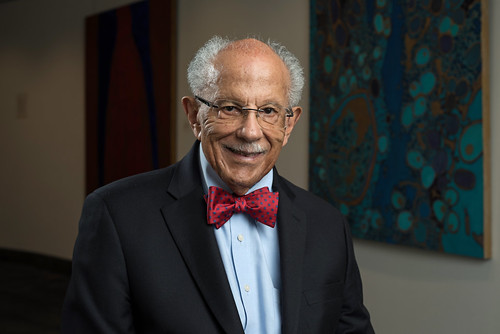
 )
)I hope you had a chance last week to check out Joseph Graves, Jr’s commentary on why more scientists of African descent are needed in evolutionary biology, and how to achieve greater parity. Graves discusses several of the challenges Americans of African descent have faced in order to participate in the sciences. One challenge he does not discuss in much detail but which others have described in various contexts is the extra pressure of being the only one “in the room” who is a member of an underrepresented group. You no longer get to be just yourself, you also have to represent whatever group or groups other people have assigned you to–sometimes without regard to whether you actually identify with that group. And as Graves points out, a category like ‘black’ is so broad and nebulous that it cannot possibly be homogeneous enough for one person to be representative of it. In recognition of these issues, I thought it would be good to highlight a variety of black scientists and to hear from them directly.*
Clarice Phelps is a nuclear chemist. She collaborated on the discovery of element 117, tennessine, named for the home of Oak Ridge National Laboratory where Phelps works. She was the first African American woman to contribute to the discovery of a chemical element. Here is a TEDx talk she gave on her career journey, highlighting the multiple tracks to scientific contribution.
Theoretical physicist Clifford Johnson studies the fabric of nature itself. He is also a prolific blogger, sharing his physics expertise, his art, his baking and many other facets of himself. Tolkien fans might want to start with this recent post reflecting on Christopher Tolkien’s passing; it includes a Hobbit-inflected physics word problem. Johnson can be found speaking on physics in several videos online; he also shared this brief interview with the History Channel with some thoughts on the relationship of science and religion.
Princess Ojiaku trained as a neuroscientist while also blogging for Scientific American, which has led to a career in science journalism. She’s also a musician and made this video about research on treating depression with music.
Thanks to this article for pointing me towards Johnson and Ojiaku. It’s by biologist Danielle Lee. In addition to her blogging for Scientific American, you can check out her TED talk on using hip-hop to generate engagement with science. (Contains some frank discussion of bird mating behaviors)
Climate scientist Warren Washington collaborated on the first computer climate model in the 1960s, pioneering an approach to understanding our world that remains vitally important. He was part of the team that received the 2007 Nobel Peace Prize for spreading knowledge of climate science, and in 2019 he received the Tyler Prize, the highest honor in climate science. Here’s a talk he gave in 2016 on his work and his career journey.
Mathematician Freeman Hrabowski is the president of the University of Maryland, Baltimore County and in this TED talk he shares practical advice based on UMBC’s experiences improving outcomes for minority students and all students in science and mathematics achievement. He also tells the story of his own participation in the civil rights movement in 1960s Alabama.
Of course, these folks are still just scratching the surface. If you want to keep exploring, perhaps try this compilation of brief interviews compiled by AAAS.
*I do feel awkward critiquing racial categories in one sentence, and in the next saying “Here are some black scientists.” At the same time, taking a color-blind approach to addressing underrepresentation or observing Black History Month would seem to miss the point. So I’ve opted to acknowledge the tension and push ahead.
Andy has worn many hats in his life. He knows this is a dreadfully clichéd notion, but since it is also literally true he uses it anyway. Among his current metaphorical hats: husband of one wife, father of two teenagers, reader of science fiction and science fact, enthusiast of contemporary symphonic music, and chief science officer. Previous metaphorical hats include: comp bio postdoc, molecular biology grad student, InterVarsity chapter president (that one came with a literal hat), music store clerk, house painter, and mosquito trapper. Among his more unique literal hats: British bobby, captain’s hats (of varying levels of authenticity) of several specific vessels, a deerstalker from 221B Baker St, and a railroad engineer’s cap. His monthly Science in Review is drawn from his weekly Science Corner posts — Wednesdays, 8am (Eastern) on the Emerging Scholars Network Blog. His book Faith across the Multiverse is available from Hendrickson.

Leave a Reply